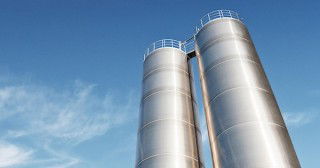Optimising the lifespan of a cement plant’s essential assets, such as the kiln, is key to the continued profitability of a cement company. The replacement of a kiln shell is one of the largest capital expenditures for a cement business, so identifying and integrating technologies that maximise its longevity and reduce damage are essential. By Richard Gagg, AMETEK Land, UK.
The cement production process with its extreme temperatures means protection of assets should be a priority. With cement kilns operating at temperatures of up to 1600˚C, accurate continuous thermal monitoring is necessary to help prevent overheating and subsequent damage to the kiln shell.
Thermal monitoring of the outer kiln shell is key to ensuring that the inner refractory lining is adequately protecting it. Continuous thermal imaging of the shell detects the development of any hot areas that may indicate missing refractory lining, refractory damage or wear. Early detection of these hot spots is vital to facilitate running repairs, thereby avoiding costly maintenance or an unplanned shutdown.
